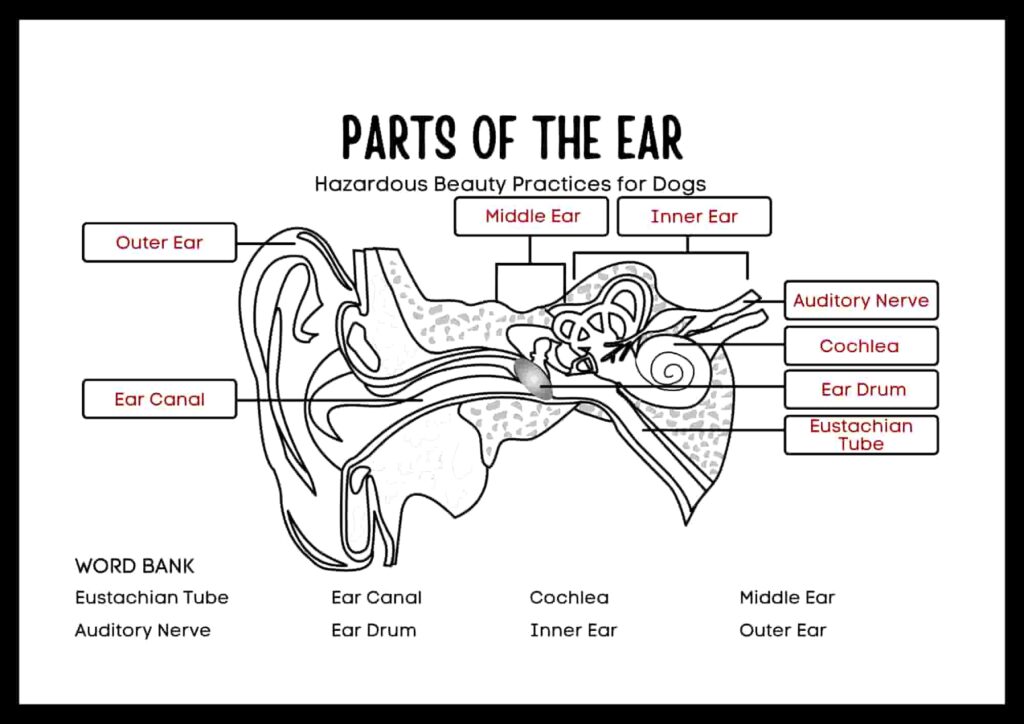Key Insights on Dog Ear Piercing: Veterinary Perspectives
Dog ear piercings are not merely a fashion trend but a highly controversial practice that poses significant risks to your pet.
This procedure can cause pain, infection, and discomfort, far outweighing any visual benefits it might offer. Responsible pet ownership involves prioritizing your dog’s health and comfort over current trends, ensuring their well-being is always placed first.
Understanding the Implications of Dog Ear Piercing
Dog ear piercing involves inserting jewelry like earrings or studs into a dog’s ears, often viewed by some as a mere extension of personal style. However, this practice raises significant ethical concerns due to the dog’s inability to consent, making it a controversial topic.
Reasons Behind Dog Ear Piercing
Some owners might pierce their dogs’ ears to make a style statement or to help identify them. However, alternatives like microchipping and ID tags are safer and more humane choices that avoid the potential pain or health risks associated with ear piercing.

Advisability of Piercing Dogs’ Ears
Veterinary professionals strongly advise against dog ear piercing due to the ethical dilemmas and health risks it presents. These can include pain, infections, and psychological stress, underscoring the importance of prioritizing animal welfare over aesthetic desires.
Legal Stance on Dog Ear Piercing
In many regions, dog ear piercing is considered animal cruelty and is legally prohibited. For example:
- In New York, it’s a punishable offense with potential fines and jail time.
- California and Texas have laws that treat such acts as criminal offenses due to the harm they cause to animals.
- Various states and local jurisdictions have specific regulations that categorize dog ear piercing as illegal.
Health Risks Associated with Dog Ear Piercing
Piercing can lead to serious complications, including:
Also read: How-to-tell-if-your-dogs-tail-is-scared
- Infections: The piercing site can easily become infected, leading to further health complications if not properly managed.
- Allergic Reactions: Dogs may react adversely to the materials used in earrings.
- Pain and Discomfort: The piercing process can be extremely painful due to the sensitive nature of the ears.
- Hearing Loss: There is a risk of damaging the nerves in the ears, which can impair a dog’s hearing.
- Long-Term Health Issues: Continuous irritation can cause scar formation and even permanent disfigurement.
Ethical Considerations
From an ethical standpoint, altering an animal’s appearance for human preferences is widely regarded as unnecessary and cruel. Advocates for animal rights emphasize that animals should be allowed to remain as nature intended without human-imposed modifications.
The Necessity of Dog Ear Piercing
Ultimately, dog ear piercing is an unnecessary procedure that does not benefit the animal in any way. It is crucial for pet owners to consider the well-being of their pets and avoid subjecting them to unnecessary and potentially harmful cosmetic procedures.
Veterinary Insights on Harmful Pet Practices and Safe Alternatives
Hazardous Beauty Practices for Dogs
One prevalent but risky trend in pet care is painting a dog’s nails. Common nail polishes contain substances like acetone, ethyl acetate, and formaldehyde, the latter of which is carcinogenic.

If a dog licks its painted nails, it risks ingesting these toxins, potentially leading to serious symptoms such as vomiting, loss of appetite, seizures, and difficulty breathing. Immediate veterinary care is crucial if poisoning is suspected.
Dog Ear Tattoos and Other Painful Procedures
Tattooing dogs, often intended for identification or aesthetic reasons, involves embedding ink permanently into the skin, which is painful and legally prohibited in many regions.
Similarly, ear cropping—surgically altering a dog’s ear shape for cosmetic purposes—and tail docking—removing part of a dog’s tail—are controversial and often illegal practices that cause unnecessary pain and potential health issues.
Safe and Stylish Alternatives to Piercing
For pet owners looking to enhance their dog’s appearance safely, consider non-invasive options:
- Stylish Collars and Leashes: Opt for high-quality, fashionable collars and leashes available in various designs and materials.
- Non-Invasive Jewelry: Use collar charms or pendants that are easy to attach and remove, allowing for frequent style changes without discomfort.
- Grooming Accessories: Enhance your dog’s look with bows, clips, or ribbons that add flair without harming your pet.
- Creative Dog Haircuts: Explore breed-specific grooming styles that are both attractive and practical for your dog.
By choosing these humane alternatives, you can ensure your dog’s style and comfort without compromising their health and well-being.
Read more: Safe and Stylish Alternatives to Piercing
Historical Use and Ethics of Tattooing Dogs
Previously, tattoos served as a method for identifying dogs, particularly breeds like German Shepherds.
The tattoos, usually placed on the ears, involved embedding a unique code linked to an owner database. This was especially common in working and service dogs to assist in recovering lost or stolen animals.
By 2017, such practices largely shifted towards microchipping, which is considered safer and more humane.
The German Shepherd Society of Australia, among others, adopted microchipping as a standard. Tattooing dogs for decorative purposes is now widely condemned as unethical and harmful due to several reasons:
- Pain and Distress: Tattooing inflicts pain by piercing the skin with needles, viewed as unethical when done for non-medical reasons.
- Risk of Infections and Complications: Inadequately sterilized equipment or contaminated ink can lead to infections and allergic reactions.
- Anesthesia Risks: Often, restraining and anesthetizing the animal is necessary, posing additional risks, particularly for dogs with existing health conditions.
- Long-term Implications: Over time, tattoos can become blurred or distorted, complicating the identification process.
Microchipping as a Superior Alternative
Today, microchipping is the preferred method for pet identification. It involves a small electronic chip implanted under the dog’s skin, which can be scanned to retrieve the owner’s contact details.
This method offers a reliable, pain-free, and permanent solution for identifying and safeguarding pets.
FAQ’s:
Can I Pierce My Dog’s Nose?
No, it is not advisable to pierce a dog’s nose. This practice can cause significant pain, discomfort, breathing difficulties, and potential infections for the dog.
Are Magnetic Earrings for Dogs Okay?
Using magnetic earrings on dogs is not recommended. These can easily detach or be dislodged by the dog, leading to risks such as gastrointestinal blockages if ingested.
Is It Safe to Pierce a Dog’s Ears?
Piercing a dog’s ears is risky and generally discouraged. It can cause infections, pain, discomfort, and potentially lasting damage to the ear cartilage.
What are pointy dog ears called?
Pointy dog ears are known as erect ears. This trait enhances a dog’s hearing capabilities and is natural in certain breeds.
Do dogs like their ears touched?
Preferences for ear touching vary among dogs based on their personality and temperament. Always observe the dog’s reaction; if they show discomfort, it is best to avoid touching their ears.
Are ears back on a dog good?
When a dog’s ears are pinned back, it may indicate fear, anxiety, or submission. Understanding the dog’s body language in context is crucial for appropriate interpretation.
Can you pierce a cat’s ear?
Piercing a cat’s ear is not recommended due to the risks of infection, pain, and potential long-term damage to the ear cartilage.
Do dogs feel pain when you cut their ears?
Ear cropping is a painful procedure for dogs, especially if not performed under appropriate anesthesia and pain management. It requires extensive aftercare and carries a high risk of infection.
Can a dog have an earring?
Piercing a dog’s ears is unsafe and poses serious health risks. Despite some dogs appearing to tolerate ear cropping, the risks associated with ear piercing make it a harmful practice.
Conclusion
Piercing a dog’s ears is a controversial and debated practice that raises ethical concerns about animal welfare. Owners should prioritize their pets’ health and comfort over aesthetic choices, fostering a supportive environment that respects the animal’s natural behaviors and physical well-being.
